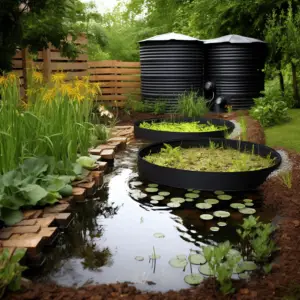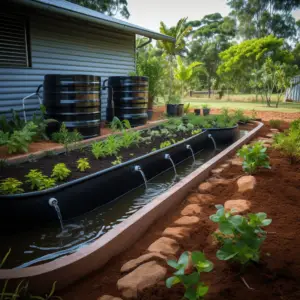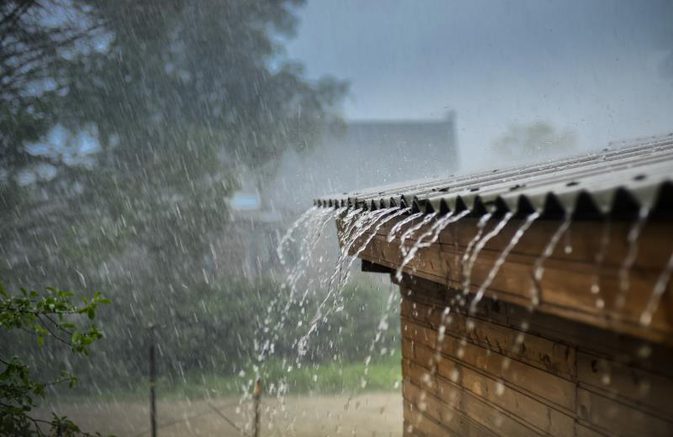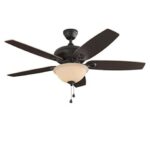Rainwater Harvesting, With reports around the world indicating a decrease in underground water resources, there has been a call by different opinion makers for better conservation of the little water we have left.
The amount of rainwater sipping into the ground each season is colossal. Most people blame this wastage on their inability to install effective gutter systems while others claim gutters are ineffective in the long run.
Gutters have been with us for centuries and their effectiveness Is beyond doubt but we believe there are other equally if not more effective, methods for collecting and conserving rainwater.
In this article, we will shed some light on rainwater harvesting techniques like the use of barrels, diverters, and landscaping-they do not employ the gutters concept.
Table of Contents
Why Should We Collect Rainwater?

There are several reasons why you should not let rainwater flow down the driveway.
It’s Free
The first and most obvious reason is that rainwater is free; there are no utility bills for rainwater. In most homes today, our water is supplied by utility firms; wouldn’t it be nice to have some free water reserve for yourself?
Utility bills are increasing every day; you can reduce the tape water invoice by embracing rainwater harvesting.
To water plants
For those of us who have plants in our compounds, watering a garden using tap water can be expensive, especially during the dry seasons.
With rainwater, however, you can water your garden every day for free. Aside from being economical in the long run, rainwater is much better than tap water as far as plant health is concerned.
Rain water contains natural plant nutrients like potassium and sulfur-these are absent in tap water.
Rain water-fed gardens are known to grow more strongly and appear greener compared to tap-fed gardens.
Methods For Harvesting Water Without Gutters
The ways in which we can collect rainwater without gutters include:
Barrels
Barrels have been with us for as long as we can remember, they are a pretty simple but very effective rainwater harvesting method.
Just leave the barrel outside during rainy season and let nature do the rest. Barrels collect water for the house or garden, eliminating the need for roofing.
Start water saving with rainwater gathering barrels from local gardening and home equipment businesses. Some newer barrels have subsurface connections to drain water to underground storage.
Diverters
Diverters are the steel or iron panels you see attached to flower bed heads or entrance roofs to shield the plants from the heavy downpour.
We cannot call them gutters but rather metal attachments placed under roof tiles to redirect rainwater. They can be any size; long, short, even a few feet is alright.
With the diverted water forming concentrated streams, it becomes easier to collect it as opposed to collecting single drops.
Landscaping
Rainwater movement follows gravity, if your landscaping project has depressed areas where rainwater flows naturally, you can install diverters in these areas to redirect the water to storage areas.
This idea is pretty simple but if well utilized, it can help you collect more water than you can store.
The collected water can be used to water the grass when the sun shines because it does.
Through Catchments
If you look at your roof closely, you will notice a few areas with slight depression where rainwater naturally flows down. Two slanting roof portions form a stream-like channel at the bottom-rain water will collect at this point.
Like gutters, these depressions collect and direct rainwater to a specific end of the rooftop. You will notice that when it pours, some sides of your roof collect more water than others.
Most people let this water flow and disappear into the soil but you can collect and store it. You just need to place collection facilities at these strategic points in your home.
The First Flush Method
This process cleans rainwater by eliminating debris that may have spilled into the tank.
A collecting tank alone cannot use the first flush approach; you must install several first flush systems.
The premise is simple: rainwater fills the first flush water collection tank from bottom to top.
A ball in the collection tank is raised when full, causing the water to flow into the final rainwater collection facility.
As the water flows out, it leaves behind any debris previously collected from the roof and atmosphere.
The water reaching the final tank is clean and free of debris and dirt from the roof.
How Long Can You Hold On To Rain Water For Plants?

Everyone knows that rainwater is better for plants than tap water because it has more nutrients and minerals in it. You might want to only water your plants with rainwater, but the question is: how long can the rainwater be stored?
Well, rainwater goes bad after about a week, but you can make it last longer by keeping it away from things that make it go bad. Some of these things are sunshine and insects that die in the water and make it dirty.Animals should also not drink this water because they can easily make it dirty.
Bottom Line
Rainwater might not be the safest to drink but it is very convenient for use in other areas. You can confidently use it to water your flowers, pet plants, and even kitchen gardens without fear of chemical contamination.
The methods mentioned above are among the most suitable and effective for rainwater collection without the use of gutters.
These methods are safe and affordable if you can collect as much water as you can and play your role in water conservation.


